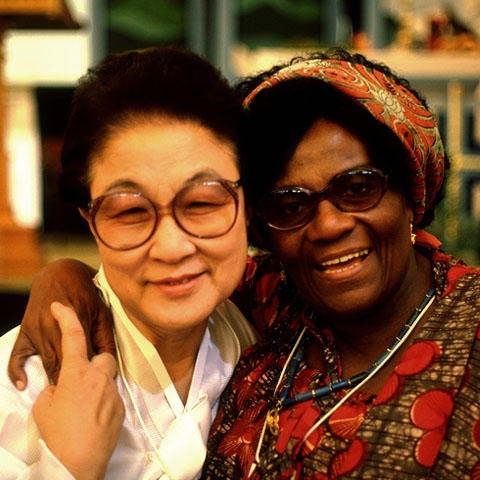
For the past two thousand years, Christian traditions that trace their teachings back to the life of Jesus have expanded and spread. Contemporary Christianity consists of three major branches (the Catholic Church, Orthodox Christian churches, and Protestantism) and claims more followers than any other religion—including about 65% of the American population.
View full album
Christianity is a worldwide religious tradition, a river of faith with many branches and with streams flowing on every continent. But these streams share a common source: the life, teachings, death, and resurrection of Jesus. This man, whom Christians call the Christ or the Messiah, was born in Roman-occupied Palestine approximately 2,000 years ago. He lived his life as a Jew in a region ruled by Roman authorities. Like many Hebrew prophets before him, he spoke of the urgent need to turn to God and he taught a message of love and justice. His active ministry of teaching was approximately three years long. Jesus was in his thirties when he was charged with treason and put to death by crucifixion. His followers reported that he rose from the dead and that he appeared before them.
Jesus left no writings. Remarkably, however, the small group of disciples who experienced his resurrection were inspired to go out and spread the news of Jesus. In the decades that followed, they put his life in writings and established communities of faith throughout the Mediterranean region and, eventually, throughout the rest of the world. It was in Antioch (now Turkey), that these communities were first called “Christians,” or followers of the way of Christ. In the first three centuries CE, Christianity spread throughout the Greco-Roman world, which extended from the Iberian Peninsula to the Indian coast. From the 5th to the 7th century, Christianity spread throughout northern Europe and was introduced in East Asia as Syrian Christians missionized in China. In the 10th century, missionaries from Constantinople (now Istanbul) brought Christianity to Russia. Throughout the second half of the second millennium, European colonialism accelerated the mass spread of Christianity.
By the late 20th century, the majority of the world’s Christians lived in the southern hemisphere. Christianity has continued to grow in the 21st century, with the multiplication of Christian churches in Africa, including many vibrant independent churches. And in Latin America, the explosive growth of Pentecostalism is challenging four centuries of Roman Catholic dominance. While Christianity is growing most rapidly in Africa and Latin America, it is still the dominant religious tradition of Europe and North America. Today, Christianity has more adherents than any other religious tradition on earth. One third of all people call themselves Christians, and according to the Religious Landscape Study conducted by the Pew Forum on Religion and Public Life, about 65% percent of people in the United States identify as Christians.
Today, Christianity has three major streams, each possessing its own internal pluralism: the Catholic Church, the Orthodox Christian churches, and the Protestant movements. Some would also argue that Anglicanism and Pentecostalism, which have both grown dramatically worldwide, constitute their own streams of the Christian tradition. But even these broad categories hardly do justice to the hundreds of particular churches and denominations that have come into being through the centuries and continue to evolve today. The Christian scriptures have been translated into a multitude of languages, and in many places around the world Christianity has been integrated with aspects of local cultures. The great diversity of Christianity is one of its most striking characteristics.